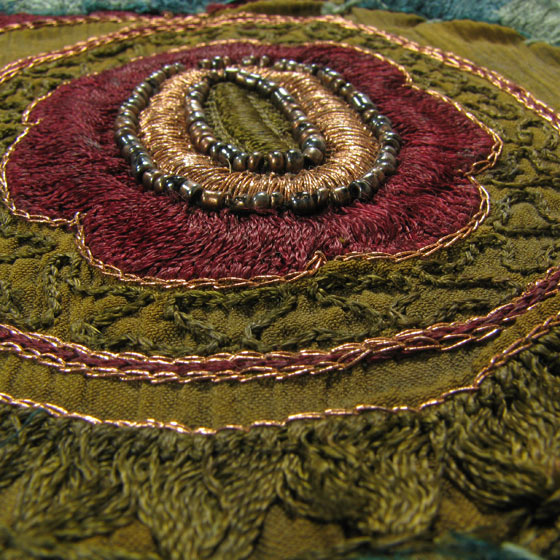===
0724,
1
===

=== |
 |
nuktah : ''A point' ; —a point (of wit); a quaint saying; a pithy sentence a subtle or quaint conceit; a nice or metaphysical distinction; a mythical signification'. (Platts p.1147)
mushtāq : 'Full of desire, desirous, wishful, longing, yearning (for); ardent, eager, keen; —s.m. A lover'. (Platts p.38)
yār : 'A friend; a lover; paramour, gallant; mistress; —companion, comrade; —an assistant'. (Platts p.1247)
shiʿār : 'Mark, signal, sign, countersign, password, parole; habit, custom, practice; method, manner'. (Platts p.728)
FWP:
SETS == POETRY
MOTIFS
NAMES
TERMS == DEVICE; 'MEANING-CREATION'; RHYMEHere's a strong, nail-the-flag-to-the-mast statement (or boast? or confession?): 'Poetry is my real lover and beloved, poetry is what I do, poetry is who I am'. It looks like a personal credo, but there's also the enjoyable wordplay in the second line, which was surely part of how the verse came to be composed. In such a short meter, a line can be almost completely filled with wordplay (and 'meaning-play', since both shāʿirī and shiʿār come from the same Arabic root), and the accompanying rhythmic sound effects. Compare the equally resonant wordplay that similarly takes up almost the whole second line of {724,5}.
A personal note: it just happens that as I write this I'm wearing a blue t-shirt from Morningside Books (a store that no longer exists). On the back in small white letters is: 'People say that life is the thing, but I prefer reading. --Logan Pearsall Smith'. Mir might have smiled to see it.
Note for grammar fans: Both lines show symmetry (that is, since A=B, then B=A); but in a verse this grammatically plain, how much difference does it really make?
Another note for grammar fans: Here's an extreme case of the dicey use of apnā . SRF takes it as short for hamārā apnā , which makes perfect sense. For if we take it in the official meaning, as 'pertaining to the subject of the sentence', then the verse becomes surrealistically self-referential: a point is its own lover, poetry is its own practice.